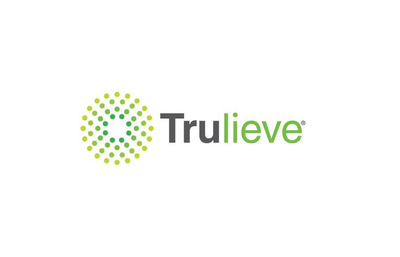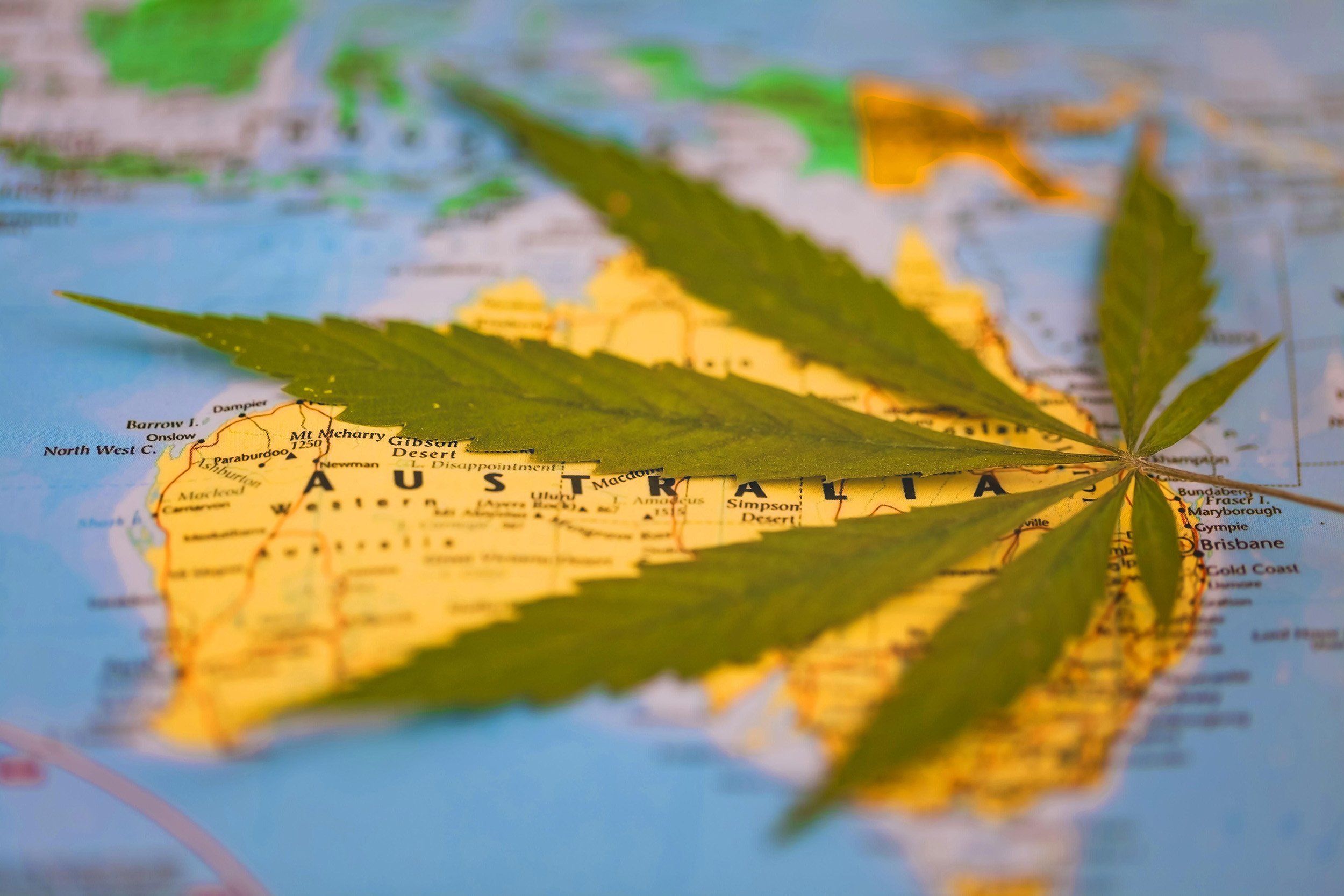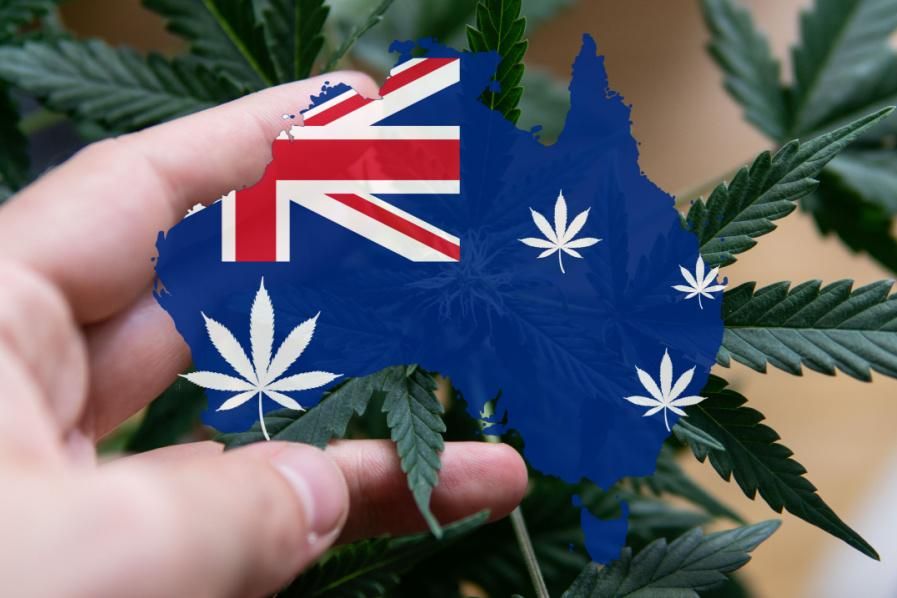- Revenue of $320.3 million , up 49% year over year and 1% sequentially
- Retail revenue grew 3% sequentially across industry leading U.S. network of 168 dispensaries as of June 30, 2022
- GAAP gross margin of 57% and Adjusted EBITDA* margin of 35%
Trulieve Cannabis Corp. (CSE: TRUL ) (OTCQX: TCNNF ) ("Trulieve" or "the Company"), a leading and top-performing cannabis company in the U.S., today announced its results for the quarter ended June 30, 2022 . Results are reported in U.S. dollars unless otherwise indicated.
Q2 2022 Financial Highlights*
- Revenue increased 49% year over year to $320.3 million from $215.1 million and 1% sequentially.
- Retail revenue increased 3% to $298.6 million and wholesale, licensing and other revenue declined by 22% sequentially to $21.7 million .
- Gross profit of $182.2 million and GAAP gross margin of 57% in the second quarter compared to gross profit of $178.2 million and GAAP gross margin of 56% in the first quarter of 2022.
- Net loss of $22.5 million , a sequential improvement of 30%. Adjusted net loss of $1.1 million * excludes $11.8 million of transaction, acquisition, integration, and other non-recurring charges primarily associated with the Harvest acquisition, a $5.2 million earnout payment for acquired cultivation in Arizona , $4.3 million in asset impairments associated with the closing of redundant cultivation facilities in Florida and a loss of $0.7 million due to the repurposing of a development stage production site in Arizona .
- Adjusted EBITDA grew 17% year over year to $111.0 million *, or 35% of revenue in the second quarter compared to Adjusted EBITDA of $105.5 million *, or 33% of revenue in the first quarter of 2022.
- Cash at quarter end of $181.4 million .
| *See "Non-GAAP Financial Measures" below for additional information and a reconciliation to GAAP for all Non-GAAP metrics. |
Q2 2022 Operational Highlights
- Opened 6 new dispensaries in Fort Myers and Zephyrhills, Florida ; Framingham, Massachusetts ; Coatesville, Pennsylvania ; and Parkersburg and South Charleston, West Virginia . Relocated one dispensary in New Port Richey, Florida .
- Exited the second quarter with operations in 11 states, with 32% of our retail locations outside of the state of Florida .
- Produced over 10 million finished goods units in the second quarter, up 79% year over year.
- Received Notice of Award of Provisional Dispensary License for District Southeast-3 in Columbus, Ohio .
- Successfully launched Modern Flower TM , Muse TM , Roll One TM , and Sweet Talk TM branded products across markets including Arizona , Florida , Maryland , Pennsylvania and West Virginia .
- Hosted inaugural Analyst Day event featuring production facility tours including a new 750 thousand square foot automated cultivation facility and corporate presentation showcasing production, retail, branding and marketing, and data analytics capabilities.
- Expanded roll out and applications of Customer Data Platform for targeted marketing campaigns.
Recent Events
- Celebrated six year anniversary of first retail sale in Florida .
- Opened 7 new dispensaries in Phoenix, Arizona ; Apopka , Coral Springs , Hollywood , and Kissimmee, Florida ; and Hurricane and Morgantown, West Virginia .
- New Phoenix dispensary represented first branded Trulieve store in Arizona , kicking off statewide rebranding efforts to continue over the next year.
- Currently operate 175 retail dispensaries and over 4.0 million square feet of cultivation and processing capacity in the United States .
- Elected to discontinue wholesale operations in Nevada and are currently evaluating options to exit the market.
- Made an initial contribution to the Smart and Safe Florida campaign, which aims to legalize adult use marijuana in Florida through a ballot initiative in November 2024 .
Management Commentary
"Our team delivered strong second quarter results with topline growth and margin improvement by staying focused on our plan," said Kim Rivers , Trulieve CEO. "During our mid-year strategic review, we identified proactive measures to address the rapidly evolving economic landscape."
Rivers continued, "We are committed to meeting customer needs, improving performance in core markets, managing cash wisely, and streamlining operations across the company. We strongly believe that taking firm and decisive action now will better position the organization to capitalize on numerous catalysts in the years ahead. Trulieve has the capital, discipline, and experience to navigate short term headwinds and emerge as a stronger company."
Financial Guidance
Factoring in strategic changes across our business, the impact of inflation on consumer spending, softness in wholesale markets, and the lack of visibility in the current macroeconomic environment, we are adjusting 2022 revenue guidance by 5% from the low end of our prior outlook to $1.25 billion to $1.3 billion . Accordingly, we anticipate Adjusted EBITDA will be in the range of $415 million to $450 million .
Financial Highlights
| Results of Operations | For the Three Months Ended | For the Six Months Ended | | | |||||||||||
| | | ||||||||||||||
| (Figures in millions and | June 30, | June 30, | change | March 31, | change | June 30, | June 30, | change | | | |||||
| | | ||||||||||||||
| Revenue | $ | 320.3 | $ | 215.1 | 49 % | $ | 318.3 | 1 % | $ | 638.6 | $ | 408.9 | 56 % | | |
| Gross Profit | $ | 182.2 | $ | 144.5 | 26 % | $ | 178.2 | 2 % | $ | 360.3 | $ | 279.7 | 29 % | | |
| Gross Margin % | | 57 % | | 67 % | | | 56 % | | | 56 % | | 68 % | | | |
| Adjusted Gross Profit | $ | 183.4 | $ | 146.7 | 25 % | $ | 185.4 | -1 % | $ | 368.8 | $ | 285.7 | 29 % | | |
| Adjusted Gross Margin % | | 57 % | | 68 % | | | 58 % | | | 58 % | | 70 % | | | |
| Operating Expenses | $ | 144.2 | $ | 68.2 | 111 % | $ | 149.5 | -4 % | $ | 293.7 | $ | 130.9 | 124 % | | |
| Operating Expenses % | | 45 % | | 32 % | | | 47 % | | | 46 % | | 32 % | | | |
| Net Income (Loss) | $ | (22.5) | $ | 40.9 | --- | $ | (32.0) | --- | $ | (54.5) | $ | 71.0 | --- | | |
| Adjusted Net Income (Loss) | $ | (1.1) | $ | 47.0 | --- | $ | 1.7 | --- | $ | 0.6 | $ | 85.5 | --- | | |
| Diluted Shares Outstanding | | 187.2 | | 133.0 | | | 187.1 | | | 187.1 | | 127.9 | | | |
| EPS | $ | (0.12) | $ | 0.31 | --- | $ | (0.17) | --- | $ | (0.29) | $ | 0.55 | --- | | |
| Adjusted EPS | $ | (0.01) | $ | 0.35 | --- | $ | 0.01 | --- | $ | 0.00 | $ | 0.67 | --- | | |
| Adjusted EBITDA | $ | 111.0 | $ | 94.9 | 17 % | $ | 105.5 | 5 % | $ | 216.5 | $ | 185.7 | 17 % | | |
| Adjusted EBITDA Margin % | | 35 % | | 44 % | | | 33 % | | | 34 % | | 45 % | | | |
Conference Call
The Company will host a conference call and live audio webcast on August 10 , 2022, at 8:30 A.M. Eastern time , to discuss its second quarter 2022 financial results.
Interested parties can join the conference call by dialing in as directed below. Please dial in 15 minutes prior to the call.
North American toll free: 1-888-317-6003 passcode: 6100603
International: 1-412-317-6061 passcode: 6100603
A live audio webcast of the conference call will be available at:
https://app.webinar.net/eNPDleGz6oj
A powerpoint presentation is available at
https://investors.trulieve.com/events-presentations
An archived replay of the webcast will be available at:
https://investors.trulieve.com/events-presentations
The Company's Form 10-Q for the quarter ended June 30, 2022 , will be available on the SEC's website or at https://investors.trulieve.com/financial-information/quarterly-results . The Company's Management Discussion and Analysis for the period and the accompanying financial statements and notes will be available under the Company's profile on SEDAR and on its website at https://investors.trulieve.com/financial-information/quarterly-results . This news release is not in any way a substitute for reading those financial statements, including the notes to the financial statements.
Non-GAAP Financial Measures
In addition to our results determined in accordance with GAAP, we supplement our results with non-GAAP financial measures, including adjusted gross profit, adjusted net income, adjusted net income per diluted share, and adjusted cash flow from operations. Our management uses these non-GAAP financial measures in conjunction with GAAP financial measures to evaluate our operating results and financial performance. We believe these measures are useful to investors as they are widely used measures of performance and can facilitate comparison to other companies. These non-GAAP financial measures have limitations as analytical tools in that they do not reflect all of the amounts associated with our results of operations as determined in accordance with GAAP. Because of these limitations, these non-GAAP financial measures should be considered along with GAAP financial performance measures. The presentation of these non-GAAP financial measures is not intended to be considered in isolation or as a substitute for, or superior to, financial information prepared and presented in accordance with GAAP. Investors are encouraged to review the reconciliation of these non-GAAP financial measures to their most directly comparable GAAP financial measures. A reconciliation of the non-GAAP financial measures to such GAAP measures can be found below. These non-GAAP financial measures should be considered supplemental to, and not a substitute for, our reported financial results prepared in accordance with GAAP.
Reconciliation of Non-GAAP Adjusted Gross Profit
The following table presents a reconciliation of GAAP gross profit to non-GAAP adjusted gross profit, for each of the periods presented:
| (Amounts expressed in millions | For the Three Months Ended | For the Six Months Ended | | | ||||||||
| | | |||||||||||
| June 30, 2022 | June 30, | March 31, | June 30, | June 30, | | | ||||||
| | | |||||||||||
| Gross Profit GAAP | $ | 182.2 | $ | 144.5 | $ | 178.2 | $ | 360.3 | $ | 279.7 | | |
| Gross Margin % GAAP | | 57 % | | 67 % | | 56 % | | 56 % | | 68 % | | |
| Add (Deduct) Impact of: | | | | | | | | | | | | |
| Inventory Step Up Fair Value | $ | 0.6 | $ | 0.0 | $ | 0.4 | $ | 1.0 | $ | 2.5 | | |
| Transaction, Acquisition, and Integration Costs | $ | 0.6 | $ | 2.2 | $ | 6.8 | $ | 7.4 | $ | 3.5 | | |
| Adjusted Gross Profit Non-GAAP | $ | 183.4 | $ | 146.7 | $ | 185.4 | $ | 368.8 | $ | 285.7 | | |
| Adjusted Gross Margin % Non-GAAP | | 57 % | | 68 % | | 58 % | | 58 % | | 70 % | | |
Reconciliation of Non-GAAP Adjusted Net Income
The following table presents a reconciliation of GAAP net income (loss) to non-GAAP adjusted net income, for each of the periods presented:
| (Amounts expressed in millions | For the Three Months Ended | For the Six Months Ended | | | ||||||||
| | | |||||||||||
| June 30, 2022 | June 30, | March 31, | June 30, | June 30, | | | ||||||
| | | |||||||||||
| Net Income (Loss) GAAP | $ | (22.5) | $ | 40.9 | $ | (32.0) | $ | (54.5) | $ | 71.0 | | |
| Add (Deduct) Impact of: | | | | | | | | | | | | |
| Warrant Liability Adjustment | $ | (1.4) | $ | 0.0 | $ | (0.8) | $ | (2.3) | $ | 0.0 | | |
| Inventory Step Up Fair Value | $ | 0.6 | $ | 0.0 | $ | 0.4 | $ | 1.0 | $ | 2.5 | | |
| Transaction, Acquisition, and Integration Costs | $ | 17.0 | $ | 4.5 | $ | 17.2 | $ | 34.2 | $ | 6.5 | | |
| Covid Related Expenses | $ | 0.2 | $ | 1.7 | $ | 0.4 | $ | 0.6 | $ | 5.5 | | |
| Divestment Non-Operating Assets | $ | 0.7 | $ | 0.0 | $ | 2.7 | $ | 3.4 | $ | 0.0 | | |
| Impairment and Disposal of Long-lived Assets | $ | 4.3 | $ | 0.0 | $ | 13.8 | $ | 18.1 | $ | 0.0 | | |
| Adjusted Net Income (Loss) Non-GAAP | $ | (1.1) | $ | 47.0 | $ | 1.7 | $ | 0.6 | $ | 85.5 | | |
Reconciliation of Non-GAAP Adjusted Earnings Per Share
The following table presents a reconciliation of GAAP earnings (loss) per share to non-GAAP adjusted earnings per share, for each of the periods presented:
| (Amounts expressed in millions | For the Three Months Ended | For the Six Months Ended | | | ||||||||
| | | |||||||||||
| June 30, 2022 | June 30, | March 31, | June 30, | June 30, | | | ||||||
| | | |||||||||||
| Earnings (Loss) Per Share GAAP | $ | (0.12) | $ | 0.31 | $ | (0.17) | $ | (0.29) | $ | 0.55 | | |
| Add (Deduct) Impact of: | | | | | | | | | | | | |
| Warrant Liability Adjustment | $ | (0.01) | $ | 0.00 | $ | 0.00 | $ | (0.01) | $ | 0.00 | | |
| Inventory Step Up Fair Value | $ | 0.00 | $ | 0.00 | $ | 0.00 | $ | 0.01 | $ | 0.02 | | |
| Transaction, Acquisition, and Integration Costs | $ | 0.09 | $ | 0.03 | $ | 0.09 | $ | 0.18 | $ | 0.05 | | |
| Covid Related Expenses | $ | 0.00 | $ | 0.01 | $ | 0.00 | $ | 0.00 | $ | 0.04 | | |
| Divestment Non-Operating Assets | $ | 0.00 | $ | 0.00 | $ | 0.01 | $ | 0.02 | $ | 0.00 | | |
| Impairment and Disposal of Long-lived Assets | $ | 0.02 | $ | 0.00 | $ | 0.07 | $ | 0.10 | $ | 0.00 | | |
| Adjusted Earnings Per Share Non-GAAP | $ | (0.01) | $ | 0.35 | $ | 0.01 | $ | 0.00 | $ | 0.67 | | |
Reconciliation of Non-GAAP Adjusted EBITDA
The following table presents a reconciliation of GAAP net income (loss) to non-GAAP Adjusted EBITDA, for each of the periods presented:
| (Amounts expressed in millions | For the Three Months Ended | For the Six Months Ended | | | ||||||||
| | | |||||||||||
| June 30, 2022 | June 30, | March 31, | June 30, | June 30, | | | ||||||
| | | |||||||||||
| Net Income (Loss) GAAP | $ | (22.5) | $ | 40.9 | $ | (32.0) | $ | (54.5) | $ | 71.0 | | |
| Add (Deduct) Impact of: | | | | | | | | | | | | |
| Interest Expense, net | $ | 19.7 | $ | 6.6 | $ | 17.9 | $ | 37.6 | $ | 14.5 | | |
| Provision For Income Taxes | $ | 44.8 | $ | 29.1 | $ | 42.3 | $ | 87.1 | $ | 63.7 | | |
| Depreciation and Amortization | $ | 30.9 | $ | 6.7 | $ | 29.3 | $ | 60.2 | $ | 12.1 | | |
| Depreciation in COGS | $ | 13.8 | $ | 5.0 | $ | 10.7 | $ | 24.5 | $ | 8.7 | | |
| EBITDA | $ | 86.7 | $ | 88.3 | $ | 68.2 | $ | 154.9 | $ | 169.9 | | |
| | | | | | | | | | | | | |
| Inventory Step Up Fair Value | $ | 0.6 | $ | 0.0 | $ | 0.4 | $ | 1.0 | $ | 2.5 | | |
| Integration and Transition Costs | $ | 5.1 | $ | 1.5 | $ | 5.3 | $ | 10.4 | $ | 1.9 | | |
| Acquisition and Transaction Costs | $ | 7.0 | $ | 1.6 | $ | 3.3 | $ | 10.3 | $ | 3.2 | | |
| Share-Based Compensation | $ | 5.7 | $ | 0.7 | $ | 4.6 | $ | 10.3 | $ | 1.5 | | |
| Other Non-Recurring Expenses | $ | 4.9 | $ | 1.4 | $ | 8.6 | $ | 13.5 | $ | 1.4 | | |
| Covid Related Expenses | $ | 0.2 | $ | 1.7 | $ | 0.4 | $ | 0.6 | $ | 5.5 | | |
| Impairment and Disposal of Long-lived Assets | $ | 4.3 | $ | 0.0 | $ | 13.8 | $ | 18.1 | $ | 0.0 | | |
| Divestment and Sale of Non-Operating Assets | $ | 0.7 | $ | 0.0 | $ | 2.7 | $ | 3.4 | $ | 0.0 | | |
| Non-Controlling Interest | $ | (1.1) | $ | 0.0 | $ | 0.0 | $ | (1.1) | $ | 0.0 | | |
| Other Expense (Income), net | $ | (1.7) | $ | (0.3) | $ | (0.9) | $ | (2.6) | $ | (0.3) | | |
| Fair Value of Derivative Liabilities - Warrants | $ | (1.4) | $ | 0.0 | $ | (0.8) | $ | (2.3) | $ | 0.0 | | |
| Adjusted EBITDA Non-GAAP | $ | 111.0 | $ | 94.9 | $ | 105.5 | $ | 216.5 | $ | 185.7 | | |
Forward-Looking Statements
This news release includes forward-looking information and statements within the meaning of the Private Securities Litigation Reform Act of 1995. These forward-looking statements relate to the Company's expectations or forecasts of business, operations, financial performance, prospects, and other plans, intentions, expectations, estimates, and beliefs and include statements regarding the Company's expected revenue and adjusted EBITDA for fiscal 2022, its plans for streamlining operations and navigating short term headwinds to emerge stronger, and potential expansion of the Company's operations. Words such as "expects", "continue", "will", "anticipates" and "intends" or similar expressions are intended to identify forward-looking statements. These forward-looking statements are based on the Company's current projections and expectations about future events and financial trends that management believes might affect its financial condition, results of operations, business strategy and financial needs, and on certain assumptions and analysis made by the Company in light of the experience and perception of historical trends, current conditions and expected future developments and other factors management believes are appropriate. Forward-looking information and statements involve and are subject to assumptions and known and unknown risks, uncertainties, and other factors which may cause actual events, results, performance, or achievements of the Company to be materially different from future events, results, performance, and achievements expressed or implied by forward-looking information and statements herein, including, without limitation, the risks discussed under the heading "Risk Factors" in our Annual Report on Form 10-K for the year ended December 31, 2021 and in our periodic reports subsequently filed with the United Sates Securities and Exchange Commission and in the Company's filings on SEDAR at www.sedar.com . Although the Company believes that any forward-looking information and statements herein are reasonable, in light of the use of assumptions and the significant risks and uncertainties inherent in such information and statements, there can be no assurance that any such forward-looking information and statements will prove to be accurate, and accordingly readers are advised to rely on their own evaluation of such risks and uncertainties and should not place undue reliance upon such forward-looking information and statements. Any forward-looking information and statements herein are made as of the date hereof and, except as required by applicable laws, the Company assumes no obligation and disclaims any intention to update or revise any forward-looking information and statements herein or to update the reasons that actual events or results could or do differ from those projected in any forward looking information and statements herein, whether as a result of new information, future events or results, or otherwise.
About Trulieve
Trulieve is an industry leading, vertically integrated cannabis company and multi-state operator in the U.S. operating in 11 states, with leading market positions in Arizona , Florida , and Pennsylvania . Trulieve is poised for accelerated growth and expansion, building scale in retail and distribution in new and existing markets through its hub strategy. By providing innovative, high-quality products across its brand portfolio, Trulieve delivers optimal customer experiences and increases access to cannabis, helping patients and customers to live without limits. Trulieve is listed on the CSE under the symbol TRUL and trades on the OTCQX market under the symbol TCNNF. For more information, please visit Trulieve.com .
Facebook: @Trulieve
Instagram: @Trulieve _
Twitter: @Trulieve
Investor Contact
Christine Hersey , Executive Director of Investor Relations
+1 (424) 202-0210
Christine.Hersey@Trulieve.com
Media Contact
Rob Kremer , Executive Director of Corporate Communications
+1 (404) 218-3077
Robert.Kremer@Trulieve.com
![]() View original content to download multimedia: https://www.prnewswire.com/news-releases/trulieve-delivers-record-second-quarter-2022-results-driven-by-organic-retail-sales-301603021.html
View original content to download multimedia: https://www.prnewswire.com/news-releases/trulieve-delivers-record-second-quarter-2022-results-driven-by-organic-retail-sales-301603021.html
SOURCE Trulieve Cannabis Corp.

![]() View original content to download multimedia: https://www.newswire.ca/en/releases/archive/August2022/10/c8218.html
View original content to download multimedia: https://www.newswire.ca/en/releases/archive/August2022/10/c8218.html






